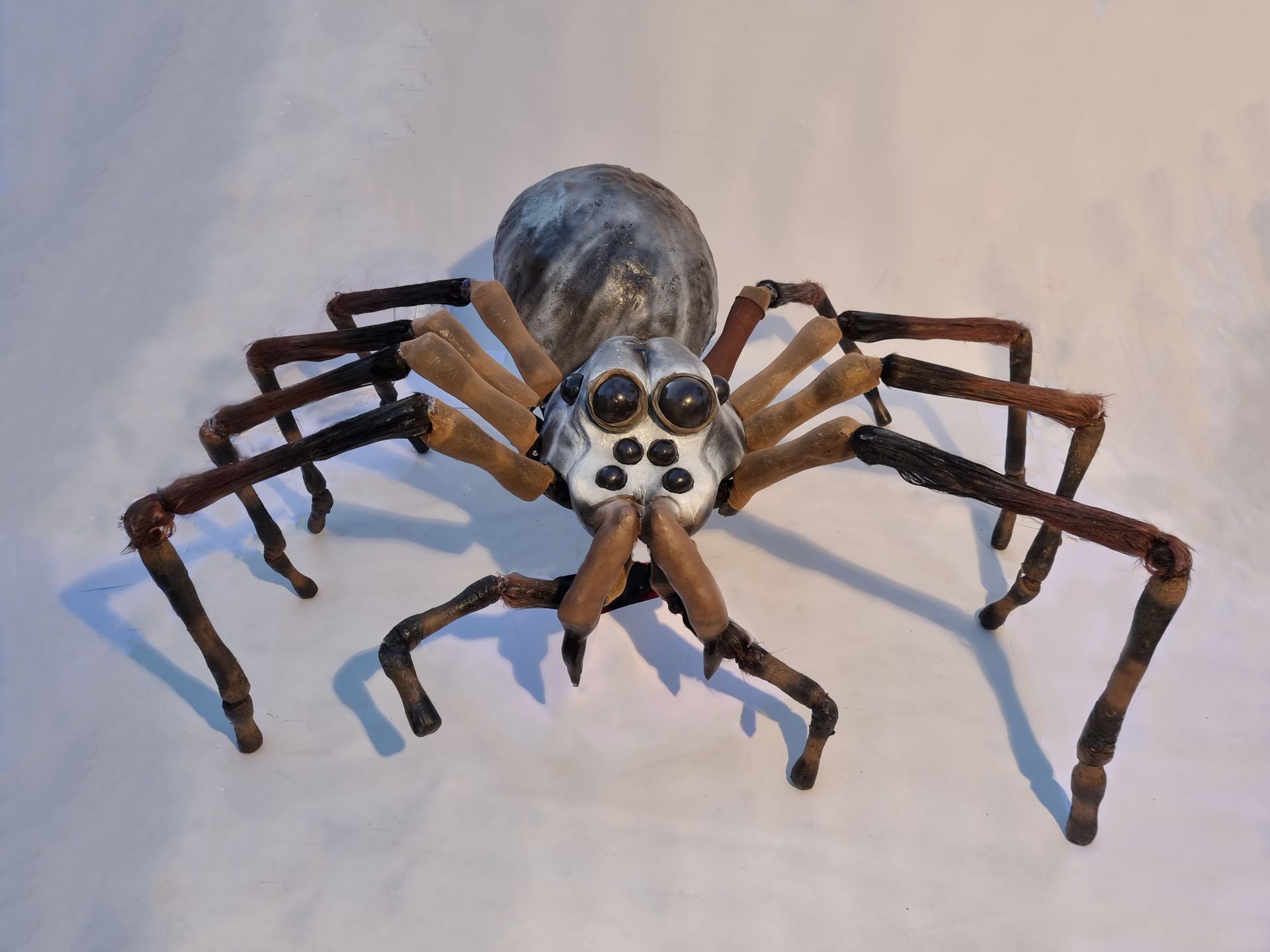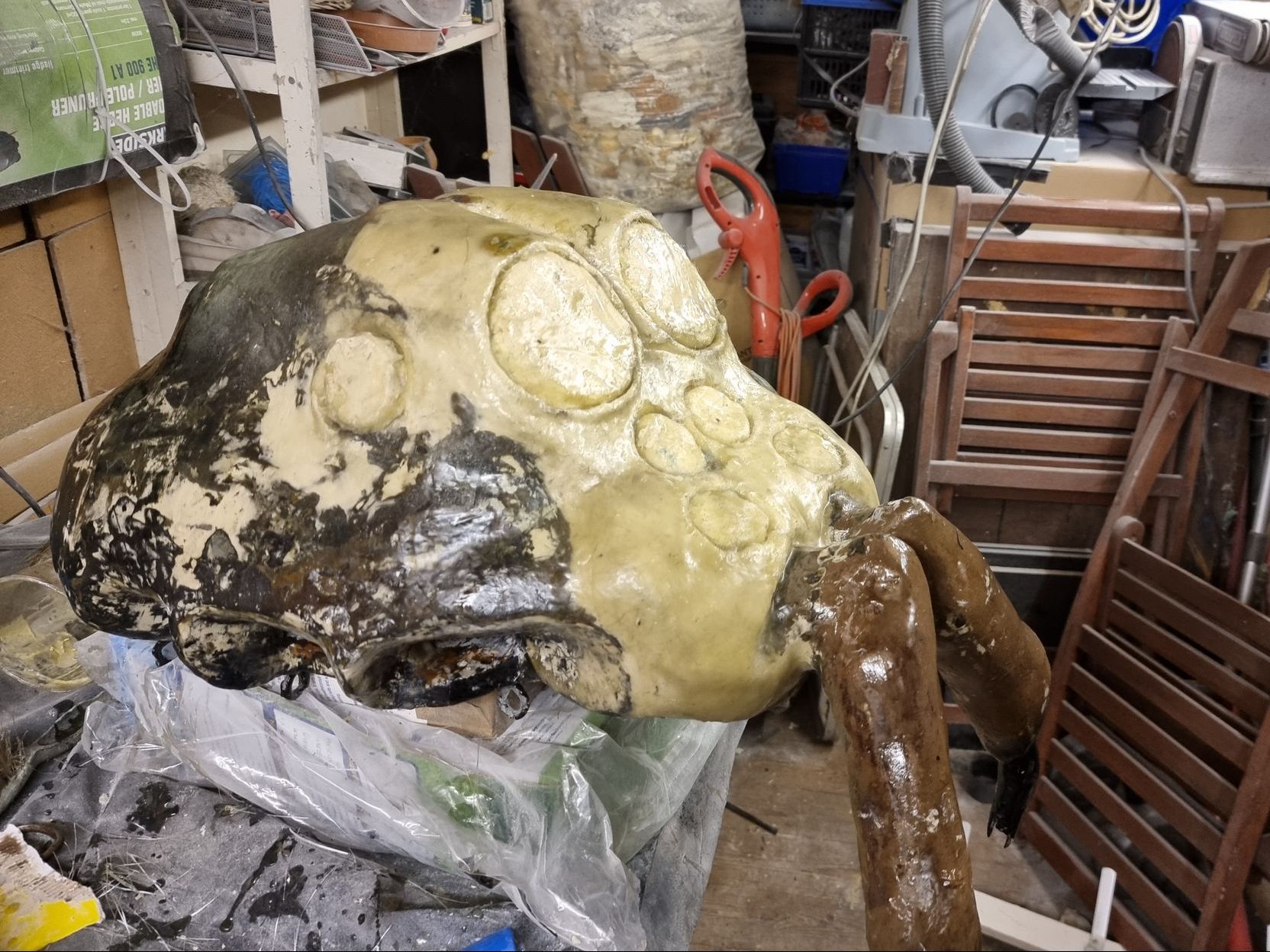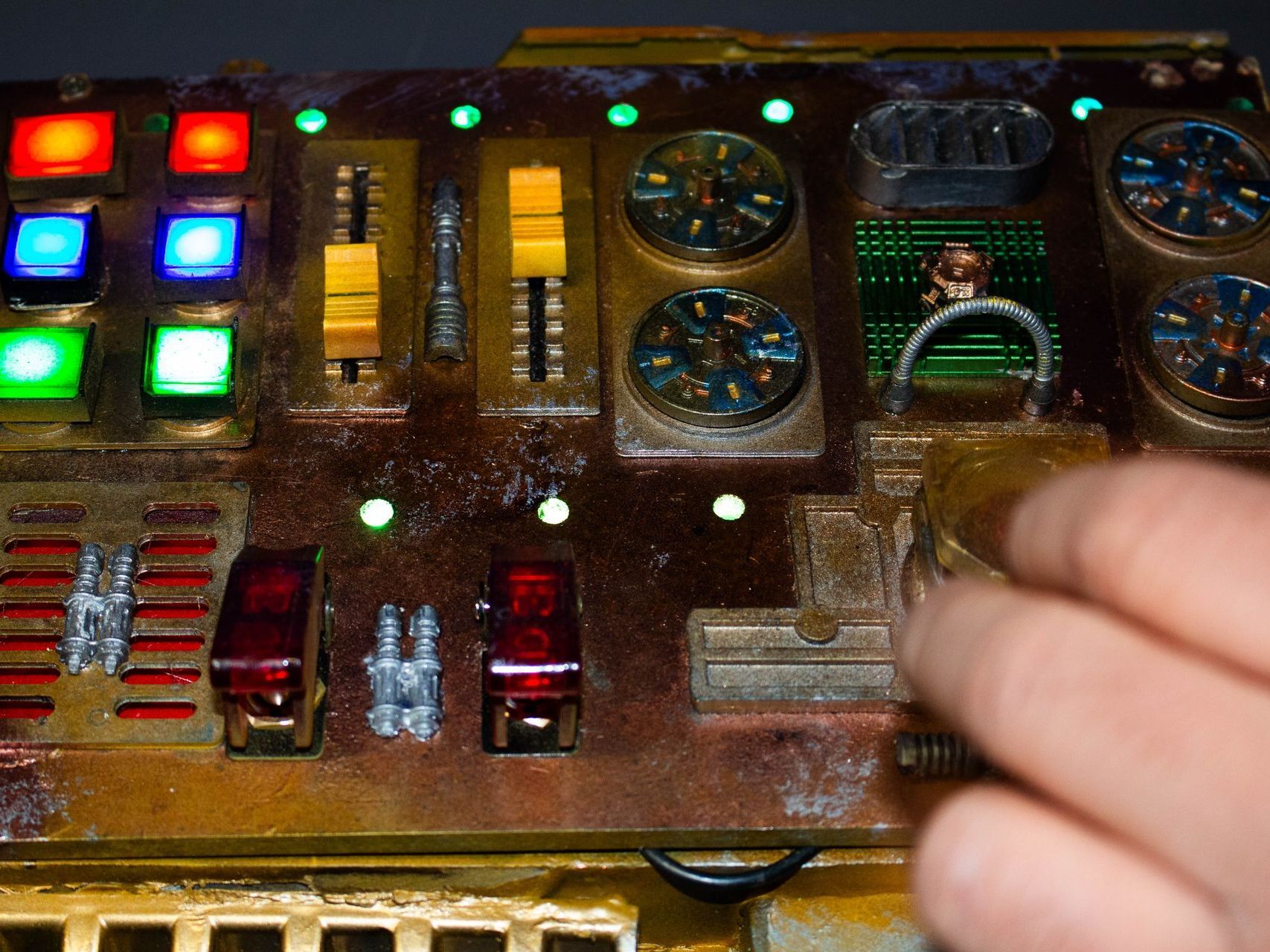Prop Tarantula Body Development
Body Construction
I started construction of the body following the Youtube DIY giant spider Halloween Prop Tutorial Rough Guide Video by Paul Jones.
In this an oval shaped piece of card board. Over this a cone made of loops of pipe lagging was bult to hold an air gap inside the body. This was to save on the cost on the huge amount of cans of expanding insulating foam. This was built up in layers of foam, much like use of squirt cream that expands and sets.
On the card was a straight piece of pipe lagging, glued and tied down with cable ties to hold a pope connected to the head as the long female part of a joint.



The body has a cardboard base with pipe lagging as a space filler, plus originally has a straight piece of pipe lagging running the length for use as the female part of a joint to connect to the head via a plastic pipe, around this above & below layer of expanding insulating foam were added. Like the head the body is mostly insulating squirt foam. A lot and a lot of foam and this cost a lot. Some filler was built around the card core to lower the amount of foam needed. The photo above is after I added a second socket in an upgrade but looks similar.
I would estimate about 40 cm cubed per can costing around £7.00 - £9 On average. But this is spread thin across the body and often filling gaps from the last application and or carving.
The body egg shape while organic does make the body hard to handle and stabilise it without a flat base.
That’s as far as the video was followed.
I then enlarged the egg shaped body to make the spider look more realistic proportion wise.
The added weight started to be a problem causing to joining single pipe to bend. It was also noticed that being a single pipe causes the body ton revolve around the pipe so simply using a thicker pipe would not help that much.
A decision was thus made to use a pair of pipes in parallel instead of the same gauge so similar connects could be used.
A pair of variants of my 3D printed connectors, that I CAD designed and developed were redesigned to have a much flatter angle more in line with the body.






To retro fit a second pipe lag socket, the body had to be spliced open. The original pipe lack socket was removed and the second pair was heavily glue gunned into place.
More expanding insulating foam was added to fill the gaps and help fit the two parts together.
Dowels were added for registration of the two parts to help mesh them together.
The expanding foam was used as glue to reconnect the two pairs which were reconnected and the seal cut and sanded
The body like the head was then encased in a single layer shell of fibre glass to protect it after the cost involved in making it.
Whilst rough edges were sanded off with power files and circular drill discs I did not use filler heavily as the more uneven finish looked more real.
Various spray paint patterns were tried. A more black and white mottled effect seemed better.








Spider Title & Intro
Page
This was a double bed size prop Tarantula, originally intended as a cool Halloween front of house prop as well as portfolio piece to discuss project development.
Finished project page.
Spider Initial Research & PPP Testing
Spider Initial Research & PPP Testing
To start the project was looking into existing props and Halloween tableaus and how such a project could be done.
View More
Initial Proving Principle Prototyping & scale modelling.
Spider Development
Head
The main central part is the head to which all other parts are connected and would be the section to connect stands and load supports.
This involved the most substantial development and most restarts.
Spider
Development
Body
This had a similar basic structure to the head but a lot simpler. It does have its own issues and problems.
This had to be re-opened for upgrades to strengthen the connections to the head.
Spider
Development
Legs
Spider
Development
Legs
The legs required repeated and costly redesign and rebuilding building to try and build enough strength into them to be able to support the weight of the spider, as well as look realistic and bond the paint to them.
View More
Spider Development
Leg Connector
The system to connect the legs needed substantial improvement and iterations developing these connection components through CAD and rapid prototypng.
Further Development Head
Further planned developments & problem solving for the head.
The next staage here would be fur.
Further Development Body
Further planned developments & problem solving for the body.
This will need to be split into sections for storage that can be easily reassembled.
Further Development
Legs & Connectors
Further planned developments & problem solving for the legs, strengthening them to support the weight of the spider.
Further Development
Skin and Fur
Further Development
Skin and Fur
Plans to further develop the prop Tarantula and current unsolved problemsand issues
View More
















